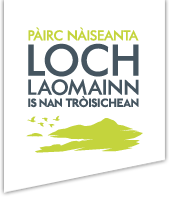
Dark skies
Stargazing…
We want everyone to enjoy the amazing quality of our night skies and help you to find them safely…so here’s some useful information to help you get started…
Dark Skies are a very special quality of the National Park because they add another dimension to your experience of the landscape. There are many areas in the Park you can go to do this where there is not much light pollution and if the weather conditions are right you can enjoy a rewarding experience and sense of wonder…
What are Dark Skies?
Scotland has some of the largest areas of dark sky in Europe. Dark skies are found in rural areas that are free of urban light pollution. From a city centre location we might see fewer than 100 stars with our naked eyes. Under a dark sky we can see over 1,000 stars. We can even see our own galaxy, the Milky Way, stretching across the sky.
Dark skies are a special quality because they contribute to our experience of the landscape and heighten our perception of scenery. The nightscape is part of our cultural heritage.
- Dark skies contribute to the experience of wild land
- Dark skies help maintain natural nocturnal habitat as light pollution is mitigated and natural darkness is valuable for wildlife who can forage and navigate themselves as well as peace and quiet!
Where to see Dark Skies
There are plenty of easily accessible places in the National Park where you can look at the stars (on a clear night). It only needs to be somewhere away from direct street lighting, with good visibility and away from buildings or trees.
How to do it
It is easy to do stargazing – just go outside on a clear night and look up, wherever you are there will be something to see. However there are a few things you can do to make the experience as breathtaking and memorable as possible. We have put together a collection of top tips to get the best out of your stargazing session. Pocket Starcharts are available online to download and designed ready for you to print-off easily!
Want to get more involved?
Stirling Astronomical Society
The Society meets from September to May during the year. Lectures are held generally on the second Friday in each month during that period, beginning at 7.30 p.m. The venue is the lecture room of the Smith Museum and Art Gallery, Dumbarton Road, Stirling.
Classes run once a month on Thursday evenings at the Stirling Highland Hotel, Spittal Street, 7:00pm – 9:00pm. These classes run from October to March.
The Society has the use of a 12.5 inch reflecting telescope, built in 1889 and located on the roof of the Stirling Highland Hotel.
‘Mercury’ is the Journal of the Stirling Astronomical Society and is issued four times a year: in January, April, July and October. The latest issue and earlier ones going back to January 2001 are available on the Mercury Journal website. Contact – stirlingastronomicalsociety@gmail.com
Helensburgh Astronomical Society
The society was formed in 2002 for the purpose of providing and continuing awareness and education of astronomy. It is open to anyone who has an interest in Astronomy. As a Society they meet on a regular basis for talks and event. They have access to Glasgow University’s 16inch Meade telescope mostly. The observatory meetings are held jointly with the Astronomical Society of Glasgow.
Visit the Helensburgh Astronomical Society website.
Dark Sky Scotland
Dark Sky Discovery Sites are a nationwide network of places that provide great views and which are accessible to everyone. They have been nominated by local groups and organisations as their top local spot to see the stars UK now boasts more than 100 spectacular stargazing sites. New Dark Sky Discovery Sites are being added all the time and many can be found across the Park. Their website shows places and venues that host regular stargazing sessions.
British Astronomical Society (formerly the Campaign for Dark Skies)
International Dark Sky Places
Started by the International Dark Sky Association (IDA) a US-based non-profit organization incorporated in 1988. The mission of the IDA is to preserve and protect the night time environment and our heritage of dark skies through quality outdoor lighting.’ Visit their website.

